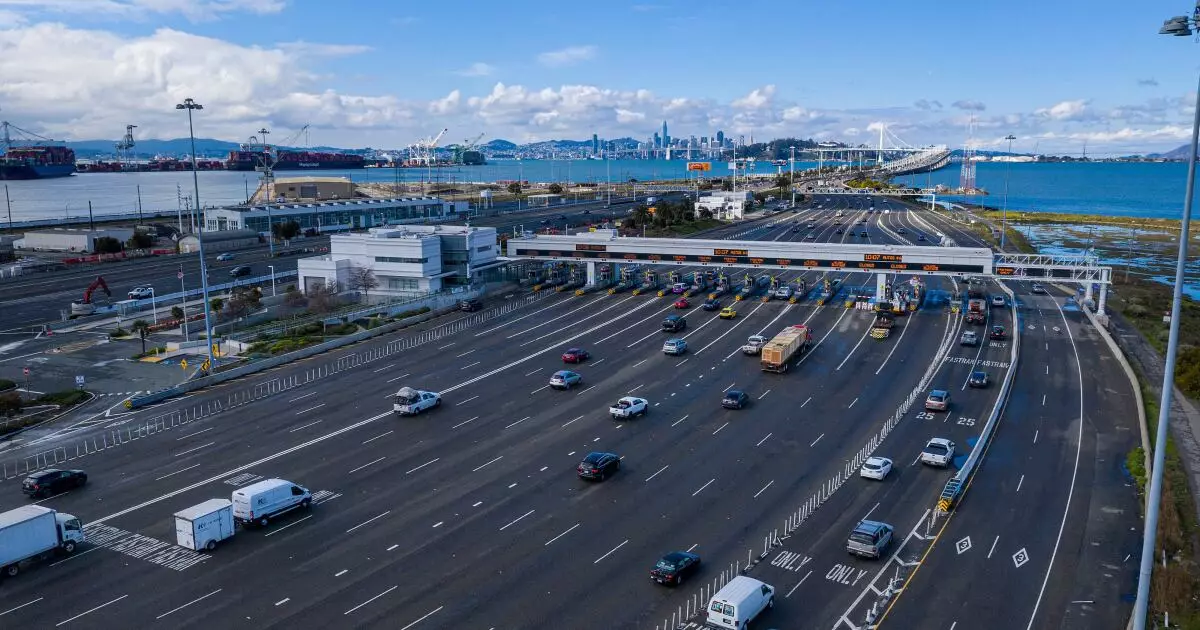In recent years, the topic of transportation funding has escalated into a controversial battleground, not only at the local level but also nationally. With two-thirds of states investigating alternative funding mechanisms for their crumbling infrastructures, a notable development has emerged from Indiana. The Indiana General Assembly has passed a contentious bill permitting tolls on all interstate highways. This marked a pivotal shift toward user-fee systems, with lawmakers emphasizing that “you pay for what you use.” However, the implications of this shift raise pressing questions regarding the future of transportation funding and the societal impact of taxing road users. It’s imperative to scrutinize whether this trend truly serves the public or merely creates a new revenue stream for a government struggling with budgeting.
At the core of this discussion lies a seldom-acknowledged reality: the gas tax is becoming increasingly inadequate for maintaining and upgrading transportation infrastructure. The rise in electric vehicles and fuel-efficient cars, while admirable in reducing carbon footprints, has created a rift between revenue collection and spending requirements. Indiana’s adoption of tolls could be a harbinger for other states wary of dwindling gas tax revenues, illustrating a broader trend of governments attempting to revive funding mechanisms that negate their reliance on outdated tax structures.
Exploration of New Revenue Sources
According to the American Road and Transportation Builders Association, over 130 transportation funding bills have emerged this year in 37 states, signifying a frantic race for financial solutions. A staggering 25% of these proposals seek to establish recurring revenue through new taxes and fees. This indicates a slight but notable ideological shift toward permanent funding solutions rather than the temporary fixes that have characterized past legislative efforts. Some bills also aim to impose one-time fees, which may not provide sustainable funding. This showcases a significant rise in legislative creativity—or desperation—as governments grapple with the reality that traditional funding is no longer adequate.
Of all the proposed measures, intriguing trends emerged, including proposals for electric vehicle fees, which could enable existing systems to adapt to new realities. However, the fairness of these taxes remains to be fully evaluated. As eco-friendly vehicles proliferate, will users who contribute less to pollution shoulder a heavier financial burden? While the idea of an electric vehicle fee is innovative in theory, it raises ethical questions about equity in transportation funding. The role of technology in shaping these new laws should not overshadow the basic premise that users of the roads should contribute fairly, regardless of their vehicle type.
Legislative Momentum and Public Reception
The increasing pace of legislative activity begs the question: are policymakers genuinely in touch with the needs of their constituents, or are they reacting out of fear of infrastructure collapse? With 16 states advancing funding measures out of the first chamber, the dialogue surrounding transportation funding is evolving rapidly. While fostering growth in infrastructure is crucial, the concerns of citizens who may be regulated by these new fees and tolls cannot be overlooked. Public backlash is probable, especially among low-income individuals who may find additional road costs burdensome.
What complicates matters further is the contrasting approaches across states. For instance, Maryland has set a precedent by passing legislation to generate $500 million in additional revenue through taxes and fees. Alternatively, Virginia’s recent move to issue up to $1 billion in revenue bonds reflects a deeper reliance on financial instruments to leapfrog bureaucratic inertia. This disparity in funding strategies showcases a lack of uniformity that can lead to confusion and frustration among citizens and policymakers alike.
Meanwhile, some states, such as North Carolina, are also turning to unconventional borrowing methods by allowing local governments to issue bonds based on anticipated transport revenue. Creative borrowing schemes might seem innovative but can lead to long-term financial obligations that burden future administrations. There is a Fine line between creative financing solutions and reckless fiscal irresponsibility, and many voters remain unaware of the potential pitfalls of such measures.
A Call for Thoughtful Solutions
As states grip onto the urgency for reform, intelligent discourse must replace partisanship in the dialogue. The conversation should pivot from merely generating revenue to thoughtfully addressing the larger questions of fairness and sustainability. While it is critical to fund our roads and bridges, this must not come at the cost of basic civic fairness.
The transportation funding landscape is changing rapidly, and it remains to be seen how these varied approaches and innovative solutions will impact our nation’s road users. Whether adapted toll systems or new taxes, the focus must remain on creating sustainable infrastructure without punitive measures. The highway systems should not be a wallet for lawmakers; instead, they should serve the public good in a manner that is equitable and beneficial to all. Time will reveal whether states can navigate this taxing terrain without losing sight of their constituents’ needs.

